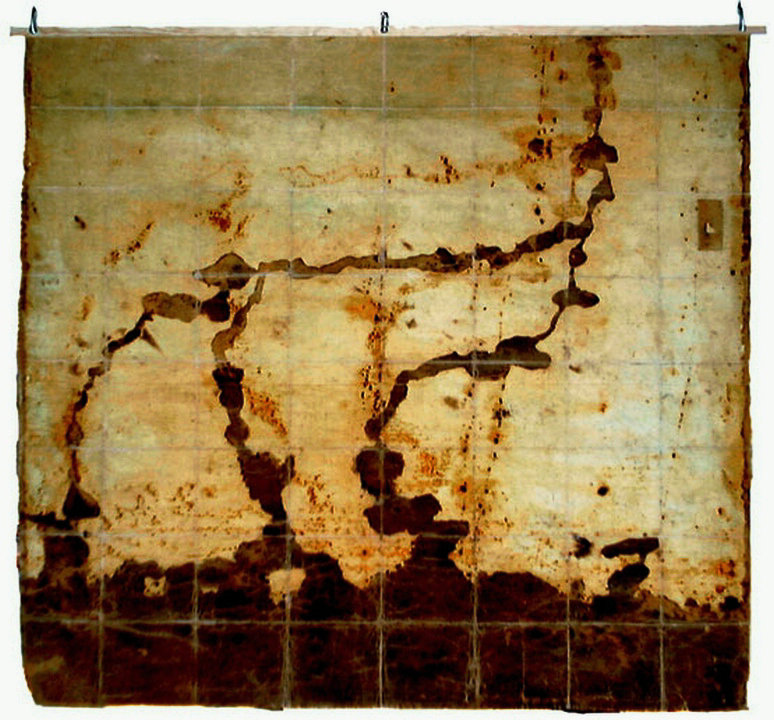Actual Art as a genre of art that involves “the self-conscious enlistment of the forces of nature, by artists, toward the completion of their art”. Collaboration with nature necessarily brings the dimension of time into as an integral component of the artworks, with some requiring many thousands of years for their completion. The artists consider the future of the work to be as important as its present, relinquishing control over the work to nature.
Actual Art ambivalence in the expressive line about the fine arts, which are at once the eminent manifestations of art and its deepest. The need for the purist line to decide between speaking for all actual art or only for adversary art.
Actual Art is a genre of art that was first named by critic Alfred Frankenstein of the San Francisco Chronicle in a review of Helene Aylon’s work. The name was chosen because the art was “real”, but the term realism was already in use.
In Actual Art, what future generations will see is programmed into the work, making time an element of the work, as well as space, form or color. The artists introduce time as a tool in the making of art. Actual Art is about energy; specifically, about the energy and life in the materials. Words like “decay”, “deterioration” or “destruction” are replaced with “change”. Tery Fugate-Wilcox is quoted as saying, “The work will last forever, as long as you understand it changes.” Actual Art moves one to think about ways to work with nature instead of fighting it. In place of the constant attempts to inhibit materials’ natural tendency to change (to the detriment of the planet), man might be examining and exploiting the inherent qualities of the materials we work with. Actual Artists have a visionary sense of the natural order of the material world.
History:
In 1982, the Actual Art Foundation formed in the Tribeca district of New York City to promote exclusively artists working in the Actual Art genre, and in 1985, obtained its 501-C3 not-for-profit tax-exempt status to fund exhibitions of Actual Art and projects proposed by Actual Artists. The most notable early exhibitions sponsored by the Actual Art Foundation were:
“It’s About Time” at the New York City Gallery in 1983
“Time Will Tell” at Squibb International, Princeton, NJ in 1984
“Slow Kinetic Art” at the Wadsworth Athenium, Hartfortd, CT
“Time Waits…” co-sponsored with Johannes, 11th Prince of Thurn and Taxis and his wife Gloria at Schloss St. Emmeram in Regensburg, Bavaria, Germany.
The “Time Will Tell” exhibit was documented in articles appearing in the New York Times, the Bergen County Record, the Princeton Packet, and the Trentonian.
Artists:
Helene Aylon, whose work employing the qualities of linseed oil to “bleed” into patterns or form a “skin”, prompted the naming of the genre by Alfred Frankenstein; “‘Actualism’ because ‘Realism’ is already taken.”
Michelle Brody, who suspended living plants in long, hanging tubes of water;
Maria Ceppi, of Switzerland, grew grass in patterns on canvas & scented soap paintings;
Gregg Degn, using gunpowder, lead, explosives & fuses to make intricate & evolving paintings & sculpture;
Dan Dempster, of Bermuda, who took his drawings beneath the sea, to allow the salt water to etch his drawings into steel & whose work was reviewed in American Mensa
Robert DuGrenier, whose hand-blown glass pieces are permanently part of the trees, as they grow into and become one with the sculptures;
Untitled by Robert DuGrenier, hand blown glass sculptures on tree
hand-blown glass “sea” shells, that living hermit crabs move into and take as their homes; and a glass beehive, that is home to thousands of Italian honey bees who busy themselves making wax & honey sculptures, as programmed into the construction of the hive, by the artist.
James Horton, who used the materials of photography as a painting medium.
Nathan Slate Joseph, of Israel, making gigantic wall pieces of pigmented & galvanized steel that have weathered over many years; Joseph was commissioned to create all of the art, including major indoor & outdoor installations by the King David Dan Hotel in Elat, Israel.
Yutaka Kobayashi, of Japan, imbedding rust in handmade paper or concrete & stone sculptures;
Elaine Lorenze, with living plants in concrete;
David Myers, put lead shot in enclosed, tilting table, making endless patterns;
“Winding” by Tony Reason, rust in encaustic on linen, 44″ x 44″
Richard Thatcher, encasing uranium, transmuting to lead, in exquisite metal boxes;
Merrill Wagner, using steel, allowed to rust in patterns, slate & rocks, weathered with pigments;
Tery Fugate-Wilcox, uses water-soluble paint & rain to make ever-changing painting on canvas;
Called the “Avatar of Actualism” He uses rain to make paintings of water-soluble paint; shotguns, explosives & lightning; dust in “dust drawings”; metals that oxidize, or diffuse together over thousands of years, the actuality of any material. His work is in the collections of the Guggenheim & Museum of Modern Art in New York, the Wadsworth Athenium in Hartford, Connecticut, the National Gallery of Australia & a 36-foot (11 m) sculpture purchased by the City of New York for J. Hood Wright Park.
The headquarters of Actual Art Foundation was also used for an episode of Law & Order circa 1990, featuring Actual Art. Actual Art Foundation lost its Tribeca headquarters in the attacks of 9/11 and created an Art Center at Candlewood Lake in Connecticut
